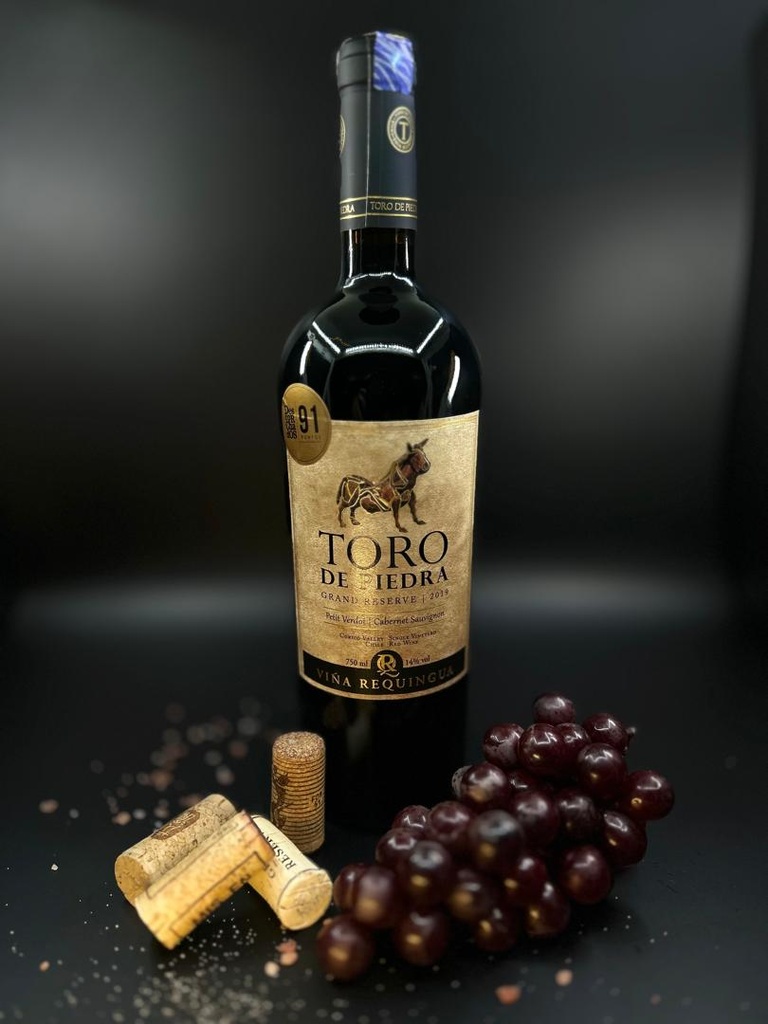Toro de Piedra Grand reserve 2019 Petit Verdot | cabernet sauvignon
Toro de Piedra Grand Reserve 2019 很可能是一款非常适合陈酿的葡萄酒,随着时间的推移,其复杂性会越来越高。赤霞珠和小维铎的混合确保了这款葡萄酒具有强劲的结构、浓郁的风味和极佳的陈酿潜力。
| Wine Style: Red |
| County: Chile |
| Grapes Variety: cabernet sauvignon/petit verdot |
| Tasting: Full-Bodied |
Ingredients and Grape Composition:
- Grape Varieties:
- Petit Verdot: 20~30% Known for its deep color, intense tannins, and aromas of dark fruit and spices.
- Cabernet Sauvignon: 70~80% Adds structure, tannins, and flavors of blackcurrant, green bell pepper, and sometimes mint or tobacco.
- While exact percentages can vary slightly by vintage, the "Toro de Piedra Grand Reserve 2019" generally contains a blend of about 50-70% Cabernet Sauvignon and 20-40% Petit Verdot. Some bottles may also have smaller amounts of other varietals, but the focus is on these two grapes.
Wine Information:
- Region: This wine is produced in the Maipo Valley, a renowned wine region in Chile known for its high-quality red wines.
- Vintage: 2019
- Alcohol Content: Typically around 14-15% ABV, depending on the specific bottling.
- Aging: It is often aged in French oak barrels for a period of 12 to 18 months, which contributes to the wine’s complexity, roundness, and smooth tannins.
Tasting Notes:
- Appearance: Deep, dark red with purple tinges.
- Aroma: The nose is typically rich and complex with aromas of ripe dark fruits (blackcurrant, plum), along with hints of oak, spices, tobacco, and some herbal undertones.
- Taste: Full-bodied, with firm tannins and a well-balanced acidity. Expect flavors of blackberries, cherries, and plums, along with a touch of spice, vanilla, and a slight herbal character. The wine shows a long, smooth finish with lingering fruit and oak flavors.
- Mouthfeel: Rich and velvety, with a fine structure that makes it well-suited for aging.
Food Pairing:
- Pairs wonderfully with grilled or roasted meats (steak, lamb), barbecued dishes, hearty stews, or mature cheeses like cheddar and gouda.
Aging Potential:
- The wine is built to age, with its structure and tannins ensuring that it can evolve and improve in the bottle for 5 to 10 years, or possibly longer, depending on storage conditions.
